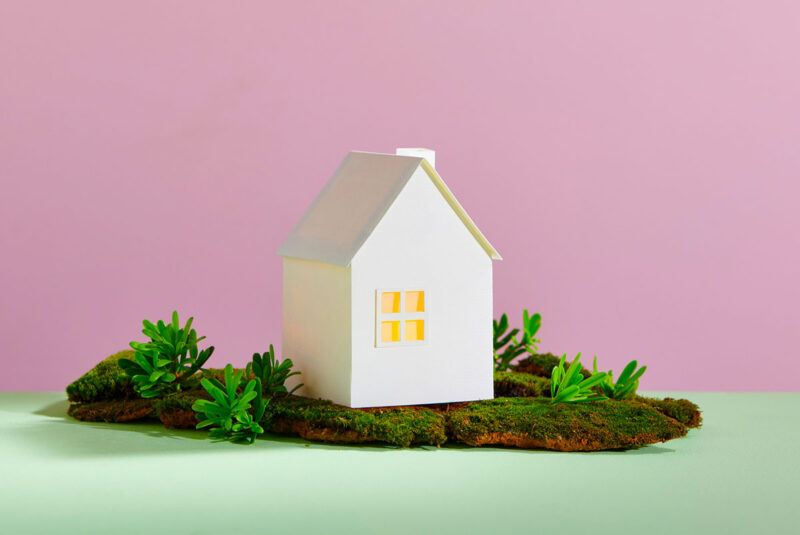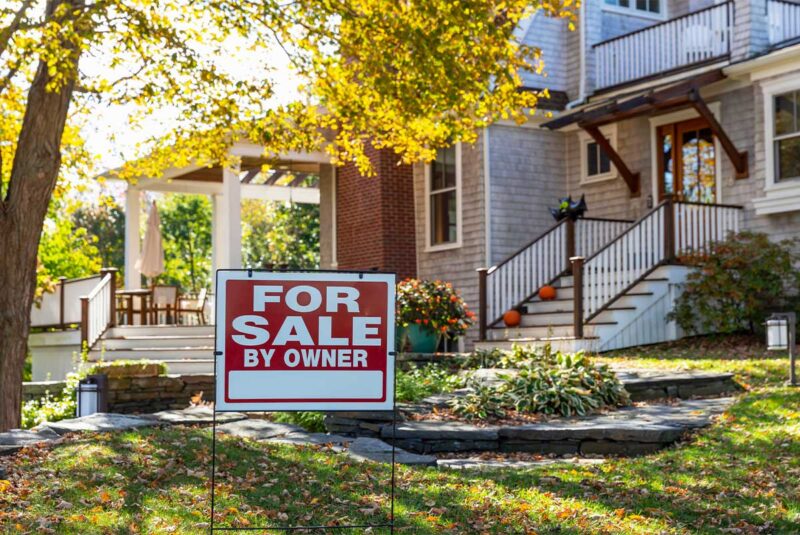Ready To Buy a Home?
Get Approved to Buy a Home
Rocket Mortgage® lets you get to house hunting sooner.
In the U.S., most people own their home for about 13 years, after which they hope to sell the property for a profit.[2]
Naturally, you’re probably curious about home appreciation and how much it affects the value of your home today and in the future.
Understanding home appreciation is important because it can give you a clearer insight into what your home is worth, what you can do to help your home appreciate faster and how it can positively (or negatively) impact homeownership.
Appreciation in Real Estate, Defined
Appreciation in real estate is defined as the increase in a property’s value over time. Appreciation may result from inflation, interest rates, schools, local job opportunities and home improvements.
How Appreciation Is Calculated
Let’s say you bought a home for $150,000, and it’s now worth $200,000.
To calculate appreciation as a percentage, subtract the purchase price ($150,000) from the home’s current market value ($200,000).
You’ll get an appreciation value of $50,000. Next, divide the $50,000 into $200,000, and you’ll get 0.25, or 25% (0.25 x 100). That means that since you’ve owned the home, its price has appreciated by 25%.
Average Real Estate Appreciation Rate
Real estate appreciation is never guaranteed. But, typically, the longer you own a home, the better the rate of appreciation. Selling a home soon after buying it can potentially hurt your profits because of things like closing costs and capital gains taxes, which is why many real estate experts recommend keeping a home for at least 5 years.
The average real estate appreciation rate can vary by location and fluctuate wildly from year to year. In general, homeowners can expect appreciation rates to average around 5% per year. From 1963 – 2020, the average appreciation rate of homes in the United States (based on median sales prices) was 5.7%.[1]
Let’s take a look at what that would look like for a $350,000 property.
- After 1 year, your home would be worth $369,950.
- After 5 years, your home could be worth $449,750.
- After 10 years of growth at 5.7%, your home would be valued at $549,500.
- After 15 years, the home’s value might climb to $649,250.
Just keep in mind that every community is different. Levels of property value growth and the percent change in value can vary wildly from year to year.
Home Appreciation Factors
Home appreciation can be influenced by many factors. Sometimes these factors are within your control as a homeowner – and sometimes they are not. Broader economic trends, which are entirely out of your control, and home improvements (which you can control) can influence home appreciation.
Housing supply and demand
Housing supply and demand and both the local and national economy play a big role in determining the value of every property. If more people want to buy houses, that creates competition, also known as demand. When people choose to sell their homes, the housing supply increases.
The housing market moves up or down based on how many people want to sell their homes relative to how many people want to buy their homes. This can create either a buyer’s market or a seller’s market. Understanding the characteristics of both can help you determine whether your home will appreciate in the short term.
Buyer’s Market
- Higher supply of houses
- Lower demand
- Buyer has the upper hand in the deal
- May be more likely when mortgage interest rates are higher
Seller’s Market
- Fewer houses on the market
- Higher demand
- Seller has the upper hand in the deal
- May be more likely when interest rates are lower
- Buyers compete with each other, which can start a bidding war
In a buyer’s market, the lack of demand means that homes tend to not appreciate, appreciate more slowly or depreciate. In a seller’s market, increased competition means that home values tend to appreciate more.
Mortgage interest rates
Mortgage interest is the amount a lender charges you to borrow money and can play a significant role in the price a buyer is willing to pay for a house. The interest rate on a mortgage is based on monetary policies implemented by the Federal Reserve as well as a borrower’s credit history.
Typically, in a low interest rate environment, a larger pool of highly-motivated buyers enter the housing market, which drives up demand and can also drive up home values.
Property location
The common expression “location, location, location” may be overused, but it’s certainly true in real estate. A property’s location is one of the most powerful drivers of home appreciation, specifically because it’s something that can’t be altered.
Take a minute and think about the price appreciation of properties in some of the most expensive places to live, like California and New York. Both California and New York are home to large cities filled with successful companies, high-paying jobs, excellent schools and world-class entertainment and restaurants.
People want access to these amenities and opportunities and are willing to pay more for housing that’s close to it all. Also, many of the most popular cities are so expensive because there’s very little land available, making each square foot expensive and exclusive.
On the other hand, if you live in an area that has more space and fewer amenities and opportunities, you may be able to afford more home for the money, but home values may not appreciate like they would in expensive cities because there’s less demand for homes in those areas.
Since the 2020 shift that normalized working remotely, there has been an exodus from high-cost areas (like California and New York) to more affordable places with more favorable tax laws.
This has caused home values in states like Florida, Texas and Arizona to appreciate, increasing home values for new and long-time residents.[3]
Home improvements
While you can’t control the economy, you can control the appearance and upkeep of your home. This is where remodeling and improvements can help contribute to home appreciation.
They may not be as glamorous as a beautiful new kitchen or bathroom, which provides a 75% return on investment (ROI), but improvements like a new or refinished wood floor, upgraded insulation, converting a basement into a living area or improving your closet can provide a better ROI.[4]
Depending on where you live, certain home improvements may yield a better return. In Florida or California, a pool may increase a property’s value substantially, but it probably wouldn’t do much for a property in Minnesota.
Cash in That Knowledge
Every homeowner hopes to reap the benefits of home appreciation, which include being able to sell your home for more money and building more equity in the home.
While homeowners can’t do much about how many people are selling their homes or the quality of local schools and jobs in their area, they can make home improvements to maximize home appreciation.
Take the first step toward buying a home.
Get approved. See what you qualify for. Start house hunting.
The Short Version
- Home appreciation is the increase in a property’s value over time
- Some common factors that may affect home appreciation include a property’s location and condition, local schools, jobs and interest rates
- The average annual percentage increase in home values is usually around 5.7%[1]
Federal Reserve Bank of St. Louis. “Average Sales Price of Houses Sold for the United States (ASPUS).” Retrieved May 2022 from https://fred.stlouisfed.org/series/ASPUS#0
National Association of REALTORS®. “How long do homeowners stay in their homes?” Retrieved May 2022 from https://www.nar.realtor/blogs/economists-outlook/how-long-do-homeowners-stay-in-their-homes.
National Association of REALTORS®. “Two-Thirds of Metros Reached Double-Digit Price Appreciation in Fourth Quarter of 2021.” Retrieved May 2022 from https://www.nar.realtor/newsroom/two-thirds-of-metros-reached-double-digit-price-appreciation-in-fourth-quarter-of-2021
National Association of REALTORS®. “Remodeling Impact Report.” Retrieved May 2022 from https://cdn.nar.realtor/sites/default/files/documents/2022-remodeling-impact-report-04-19-2022.pdf




